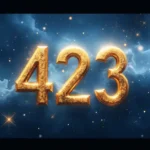Cornflower blue sapphire is one of the most sought-after gemstones, admired for its vivid, pure blue hue that closely resembles the petals of the cornflower. This exquisite sapphire variety is highly prized in the world of fine jewelry and is considered a symbol of wisdom, loyalty, and prosperity. Its rarity, durability, and unmatched brilliance make it a top choice for collectors, investors, and gemstone enthusiasts.
In this comprehensive guide, we will delve into the origins, properties, benefits, and uses of cornflower blue sapphire.
Table of Contents
ToggleKey Takeaways
- What is Cornflower Blue Sapphire? A vivid, medium-toned blue sapphire resembling cornflower petals.
- Origin & Rarity: Mined in Sri Lanka, Kashmir, Madagascar, and Myanmar, with rare high-quality specimens.
- Properties: Hardness of 9 (Mohs scale), strong pleochroism, and exceptional brilliance.
- Metaphysical Benefits: Enhances wisdom, intuition, and emotional balance.
- Identification: Look for even color, minor inclusions, refractive index, and certification from GIA or IGI.
- Comparison: Lighter than royal blue sapphire, more affordable than Kashmir sapphire.
- Uses: Popular in fine jewelry, astrology, and as a gemstone investment.
- Care: Clean with mild soap and water, avoid harsh chemicals, and store properly.
- Buying Tips: Purchase from reputable sources with gemological certification.
What is Cornflower Blue Sapphire?
Cornflower blue is a sapphire of variety of the mineral corundum (Al₂O₃) that displays a medium-toned, vivid blue color, reminiscent of the cornflower flower. It is considered the ideal shade of blue for sapphire gemstones and is often preferred over darker or lighter variations.
Formation and Composition
Cornflower sapphires form under high-pressure conditions deep within the Earth’s crust. They acquire their signature blue hue due to trace elements of iron and titanium present in the corundum structure. The intensity and saturation of the blue color depend on the concentration of these trace elements.
Where is Cornflower Blue Sapphire Found?
Cornflower blue sapphires are primarily mined in a few select locations worldwide. The most notable sources include:
- Sri Lanka (Ceylon) – Known for producing some of the finest cornflower blue sapphires with exceptional clarity and brilliance.
- Kashmir (India) – Famous for velvety-textured sapphires, though rare and highly valued.
- Madagascar – A significant supplier of high-quality cornflower blue sapphires.
- Myanmar (Burma) – Produces sapphires with deep saturation and outstanding quality.
- Thailand and Cambodia – Known for commercial-grade blue sapphires.
Physical and Optical Properties of Cornflower Blue Sapphire
Physical Properties
- Hardness: 9 on the Mohs hardness scale (second only to diamond).
- Crystal Structure: Trigonal.
- Luster: Vitreous (glass-like) to silky.
- Transparency: Transparent to slightly translucent.
- Durability: Extremely resistant to scratches and wear.
Optical Properties
- Color: Medium-tone vivid blue with slight violet undertones.
- Pleochroism: Displays different shades of blue when viewed from different angles.
- Refractive Index: 1.76 – 1.78, contributing to its brilliant sparkle.
- Fluorescence: Some natural cornflower blue sapphires may exhibit slight fluorescence under UV light.
Metaphysical and Healing Properties
Cornflower blue is not only admired for its beauty but also for its strong metaphysical properties. It is believed to influence the mind, emotions, and spiritual well-being.
Emotional and Spiritual Benefits
- Promotes Mental Clarity: Enhances focus, intellect, and decision-making skills.
- Encourages Wisdom and Knowledge: Symbolizes wisdom and deep spiritual insight.
- Brings Emotional Balance: Helps reduce stress, anxiety, and mood swings.
- Attracts Prosperity and Success: Associated with wealth, abundance, and positive energy.
Chakra Healing
Cornflower blue is a sapphire which linked to:
- Throat Chakra (Vishuddha): Enhances communication and self-expression.
- Third Eye Chakra (Ajna): Boosts intuition, insight, and spiritual awareness.
How to Identify a Genuine Cornflower Blue Sapphire
With the rising popularity of this gemstone, synthetic and treated sapphires are often sold in the market. Here are key ways to verify authenticity:
Color Consistency
- Genuine cornflower sapphires have an even distribution of color without patches of zoning.
- The ideal shade should not be too dark or too pale.
Clarity and Inclusions
- Natural sapphires may have minor inclusions, such as rutile silk, which do not affect their brilliance.
- A completely flawless sapphire is extremely rare and may indicate synthetic treatment.
Refractive Index Test
- A professional gemologist can check the refractive index (RI) to distinguish genuine sapphires from imitations.
Certification
- Always request a certification from a reputable gemological laboratory such as GIA (Gemological Institute of America) or IGI (International Gemological Institute).
Cornflower Blue Sapphire vs. Other Blue Sapphires
Cornflower Blue Sapphire vs. Kashmir Sapphire
- Cornflower Blue Sapphire: Medium vivid blue, widely available, and more affordable.
- Kashmir Sapphire: Rich, velvety deep blue, extremely rare, and highly valuable.
Cornflower Blue Sapphire vs. Royal Blue Sapphire
- Cornflower Blue: Lighter and more vibrant in tone.
- Royal Blue: Darker and more intense in saturation.
Uses of Cornflower Blue Sapphire
Engagement Rings and Jewelry
- Due to its durability and stunning color, cornflower blue is a popular choice for engagement rings, necklaces, and earrings.
Astrological Benefits
- In Vedic astrology, it is associated with the planet Saturn (Shani) and is believed to bring discipline, success, and protection.
Investment and Collectible Gemstones
- Rare and high-quality cornflower blue are appreciated, making them a great investment.
Caring for Cornflower Blue Sapphire
To maintain its brilliance and longevity, follow these care tips:
- Cleaning: Use mild soap and warm water with a soft brush.
- Avoid Harsh Chemicals: Do not expose them to household cleaners or bleach.
- Storage: Keep it separate from other gemstones to prevent scratches.
- Professional Checkups: Get periodic inspections from a jeweler to ensure the setting remains secure.
Where to Buy Cornflower Blue Sapphire
When purchasing a cornflower blue sapphire, ensure you buy from a trusted jeweler or gemstone dealer. Consider reputable sources such as:
- Luxury Jewelry Brands (Tiffany & Co., Cartier, Bvlgari)
- Certified Online Gemstone Retailers (Blue Nile, James Allen, GemPundit)
- Auction Houses (Sotheby’s, Christie’s)
Always ask for a gemological certificate to verify authenticity.
Conclusion
Cornflower blue sapphire is an exceptional gemstone, treasured for its color, durability, and metaphysical properties. Whether used in fine jewelry, astrological benefits, or as an investment, this gemstone remains a timeless choice for gem lovers worldwide. When purchasing, ensure authenticity through certification and buy from reputable sellers.
Embrace the elegance of it and let its timeless beauty enhance your life!
FAQs
What makes cornflower blue sapphire special?
Its pure, vivid blue hue and high clarity make it one of the most desirable sapphire varieties.
Is cornflower blue sapphire rare?
Yes, finding a naturally vivid and evenly colored cornflower blue sapphire is rare.
How much does a cornflower blue sapphire cost?
Prices vary based on origin, size, clarity, and certification, ranging from hundreds to thousands of dollars per carat.
Can cornflower blue sapphire be worn every day?
Yes, due to its hardness (9 on the Mohs scale), it is highly durable and ideal for daily wear.
Can cornflower blue sapphire be used in engagement rings?
Yes, cornflower blue sapphire is a popular choice for engagement rings due to its durability, unique color, and symbolism of loyalty and wisdom.
I’m Ashaba, a passionate and insightful individual with a deep interest in understanding the human mind, I specialize in exploring the hidden layers of thought and emotion through dream interpretation and storytelling. With a love for unraveling complex ideas, I aim to inspire others through words, offering fresh perspectives on life’s mysteries. Driven by curiosity and creativity, I seek to connect with others, whether through interpreting dreams, crafting narratives, or sharing unique insights into the subconscious mind.










